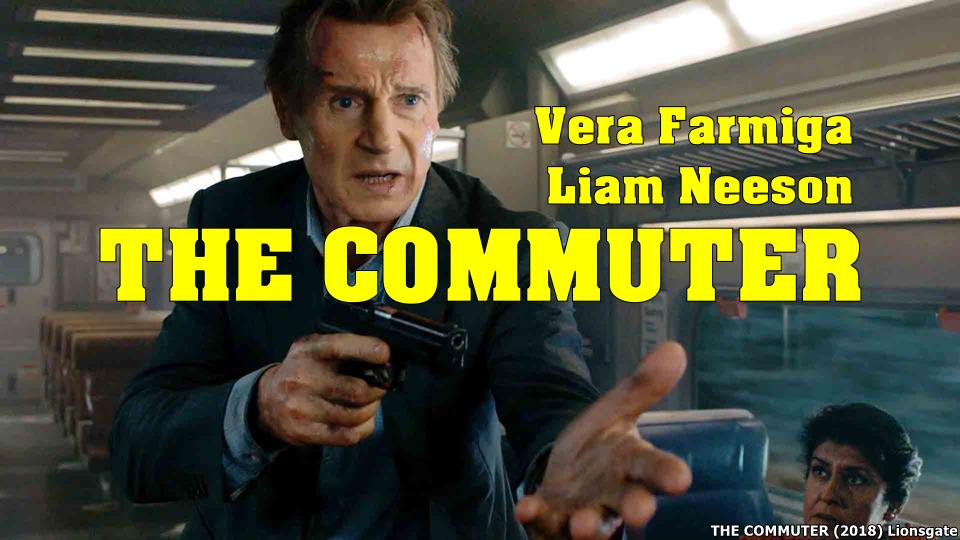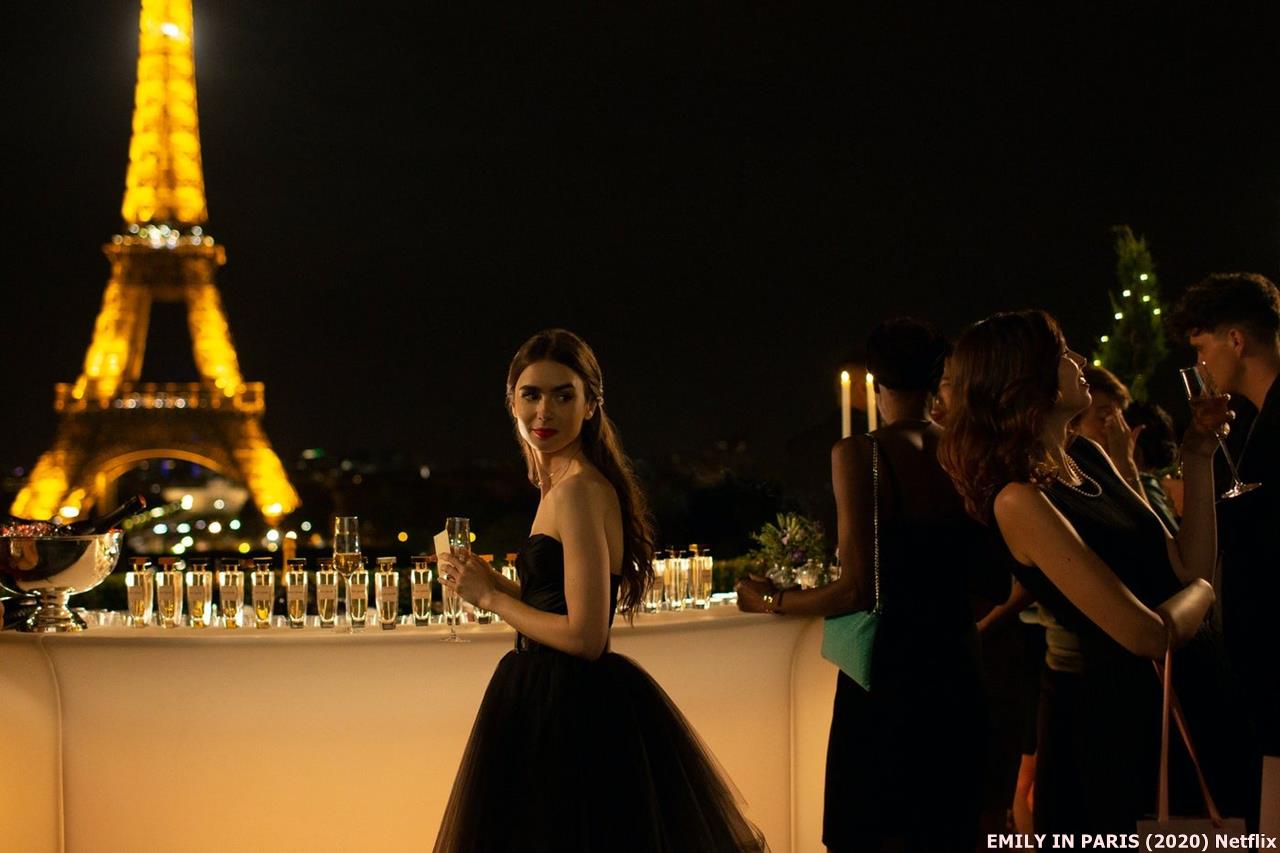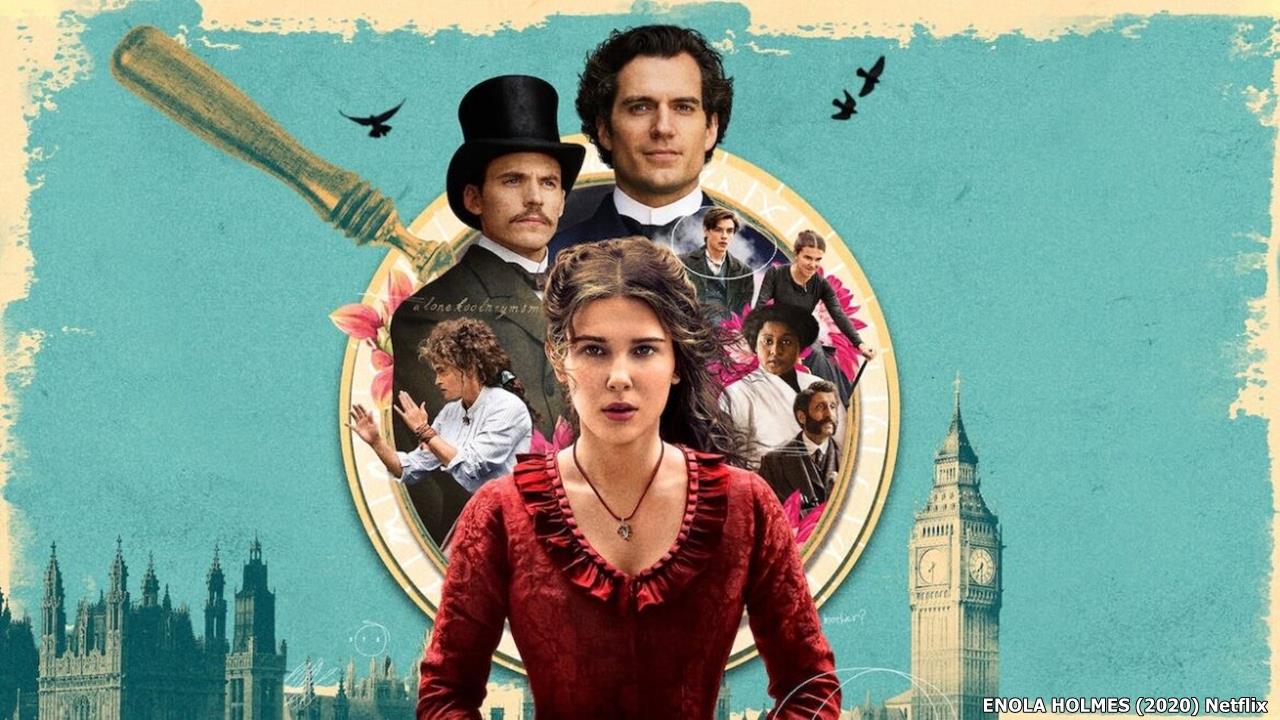THE COMMUTER (2018) Production Notes
Following the worldwide success of Unknown, Non-Stop, and Run All Night, star Liam Neeson and director Jaume Collet-Serra reunite for a fourth time with the explosive thriller The Commuter.
VIEW ALL THE COMMUTER
PAGES
(Cast, Crew, Production Notes, Review, Photos, Articles)
| ABOUT THE PRODUCTION
"The Commuter asks the audience: If someone asked you to do something that seems insignificant- but you're not sure of the outcome-in exchange for a considerable financial reward, would you do it?" says Jaume Collet-Serra. "That's the philosophical choice that our central character - a man of 60 who's just been fired, has no savings, and mortgage he cannot afford - is faced with. Is he thinking just about himself or is he going to take into consideration the possible moral consequences of what he's asked to do?" The story centers on Michael MacCauley (Neeson), a former cop and a now mid-level manager at a faceless insurance company, who lives with his wife (Elizabeth McGovern) and son (Dean-Charles Chapman) outside of New York City. Like so many hard-working family men, he is facing a financial breaking point, trying to make ends meet on a paycheck that is stretched to the rafters and a son who is about to go to college. Michael's situation worsens when he is unexpectedly fired. On his commute home, the passenger sitting opposite him introduces herself as Joanna (Vera Farmiga) and puts a proposition before him: find a passenger on-board the train who doesn't belong, in return for a handsome financial reward. As an excop with a strong moral sense of right and wrong, this is not an offer Michael takes lightly. Apprehensive to return home after just having lost his job, Michael eventually agrees to find the "suspect" amongst the sea of passengers, using his wit and skill to uncover their identity. But he soon realizes that he is at the center of a deadly conspiracy that only he can stop. For Neeson, the story's narrative gives it a thrilling momentum. "The story almost plays in real time," says the actor. "The main character realizes what he's set in motion; and sets out to identify the person that holds the key to the conspiracy. The tension cranks up at every stop as new passengers get on, and another clue is left for him. The danger gradually gets greater and greater and the film becomes this really fast-paced psychological thriller along the lines of a Hitchcock's Strangers on a Train or North by Northwest." Producer Alex Heineman notes, "Andrew Rona, my partner in The Picture Company, and I both read the script and just fell in love with it. We made Non-Stop and Unknown with Liam and Jaume and we thought this could be another thriller in the same vein in terms of narrative, character, and style." A Working Relationship Director Jaume Collet-Serra and star Liam Neeson already had an enviable track record, so teaming up again for another thrill ride, this time on a train in New York, was a no-brainer. When he read the script, Collet-Serra saw the parallels with Non-Stop. "It's a spiritual sequel to NonStop," says the director. "With a mystery evolving around your central character, it has more impact if your protagonist is a normal guy." Collet-Serra goes on, "How much is he willing to do for money without knowing the consequences of what he's going to do? When extraordinary events happen to regular people, it's important that the first choices that these characters make are choices that we, as an audience, agree with, and that the action escalates plausibly from those choices." Quite apart from the appeal of the script and playing such a multi-layered character, Neeson was thrilled to be working again with Collet-Serra. "I love working with Jaume," says the actor. "I met him when we did Unknown and he and I just clicked. We don't analyze scripts too deeply; we just have a really good dance partnership and each time I work with him our little dance routine gets more and more intimate. He makes my job easier and he says I make his job easier, which is the ultimate compliment to me. Jaume's a real filmmaker; he's always thinking of the overall arc of the film and where the story's going. He devours cinema, he just loves it and has a real intuitive feel for how a scene's going and how it should be played." Collet-Serra was keen for The Commuter to have a different narrative point of view than the previous films Neeson has starred in. "I want people to identify with the lead character in this movie a little bit more than in some of Liam's other films," he says. "I like movies played from the main character's point of view, so we know exactly what he knows at the same time that he knows it. The audience is with him every step of the way, so we learn that his family is in danger only when he does. We wanted to keep the camera on the train, but imply that his family was in danger without showing it. Producer Andrew Rona was particularly impressed by Collet-Serra's approach to filmmaking. "Jaume looks at a script very methodically," says the producer. "He really rips it apart and tries to figure it out from every angle. He gives every character a thorough back story; he knows their motivations. When it comes to making the film, Jaume has done all the research, and he knows everything about the film, and on the day we can just have fun with it. He uses the camera almost like a character. He picks up every nuance, all the little things that you might not get in the script and he adds another layer to it. It's not just about the action or the characters, but it's about the mood and the tone and the way he shoots it." Producer Alex Heineman points out the head-spinning energy Collet-Serra injects into his filmmaking, despite the film being set in one location: "Jaume doesn't waste a second of film. His movies have a great pace and they're just so suspenseful and tense, you just don't know what's going to happen next. He knows how to put his lead character in a situation which keep the audience guessing how they're going to get out of it. Jaume's terrific at crafting suspense with an everyday character at the center." Liam Neeson As The Commuter When it came to choosing the leading man, Rona and Heineman knew only one man would be up for the job: Liam Neeson. The everyman quality of the lead character appealed to Neeson, who knew it would also appeal to the audience. "Michael has been taking the same train for 10 years, five days a week, and then one day he is fired," says the actor. "He doesn't know how to tell his wife, and he's double-mortgaged on his house. After having a drink in the local bar with an ex-cop friend of his, he takes the commuter train back to face the music. On the train, a mysterious person sits beside him and asks, 'Would you do one tiny, little thing for $100,000?'" Certainly Vera Farmiga herself found working with Neeson one of the pleasures of making the film. "I didn't know Liam before this film," says Farmiga. "Liam was just a myth, he was a legend! He is so warm and he's very curious; he's very tender but he's a big oak in stature. He's wonderful." Despite their impressive track record, the director was still surprised every day by the actor's talent. "Liam can do no wrong," says the director. "He's an amazing actor. On every movie I've done with him, I'm like a kid on Christmas morning on the first day of shooting, waiting to see what character he's going to show me. He has the character so fleshed out from shot one, day one, and I can see his mannerisms, his eyes. I know every detail of Liam's face and behavior obviously, but he still surprises me in every movie that he's able to completely change and create new characters with different subtleties." All Aboard! Supporting Cast Supporting Liam Neeson is an ensemble cast made up of a diverse array of international actors, from established talents to up-and-coming stars. The mysterious role of Joanna is played by Farmiga, who starred in Collet-Sera's horror film Orphan. At the end of his last day in the office, Michael gets on the train ready to face his family and admit that he has been fired and that the family faces bankruptcy. Into the seat opposite him slides a woman who is not one of the regular commuters Michael knows. She introduces herself and makes him a strange offer: Something of hers has been stolen on the train and she needs help finding it. If he agrees to help, he'll be generously compensated. Farmiga recalls how she was approached to board the project: "Jaume sent me an email asking, 'Do you want to spend some time on a train with Liam Neeson?' and I replied, 'I thought you'd never ask…but do I have to pay for the ticket?!'" she explains. "What struck me about this film is that it is a morality tale," continues the actress. "I loved that The Commuter disguises a morality tale as a genre film. Michael strikes a Faustian pact with this mysterious woman and, once he's agreed, the film plays out his deep regret. Joanna is the catalyst, a temptress who entices him, coaches him, and pulls his strings throughout." Playing such a character called on Farmiga to flex her acting muscles. "I wanted to infuse the character of Joanna with a kind of supernatural mischief," she says. "I don't see her as good or bad. I see her as this avatar of vice and virtue. For me, she is literally shaking up his otherwise mundane existence. We all come to a fork in the road at times where we're quizzed on morality versus need, and she's that quiz master. I don't think she's the devil; indeed Jaume said, 'No, she's God!'" Farmiga was thrilled to be working again with Collet-Serra. "I have a really affectionate working relationship with him," explains Farmiga. "What makes him so unique as a director is that he gets behind the camera and he's visible all the time. He's right there with you." Collet-Serra knew that she would make an excellent match for Liam Neeson. "She manages to infuse scenes that are basically a lot of exposition with character and energy, but so effortlessly," he continues. "She mesmerizes the camera and, through the camera, the audience. Seeing her and Liam together is the most fun that I've had in a long time." Patrick Wilson plays Alex Murphy, Michael's former colleague from the New York Police Department. "Liam Neeson was the first reason I wanted to do the film," says Wilson, who co-starred with Neeson in The A-Team. "I didn't know Jaume Collet-Serra, but Vera Farmiga is a dear friend and said he's the best, so it was an easy decision." It was Neeson's generosity, both as a person and as an actor, that made working on the film such a pleasure for Wilson. "Every character he plays, you root for him. You always want his character to succeed whatever distress or turmoil he's in. What I loved about this is that it's immediately clear that Michael has really lost a lot and he's not in a great place and he's trying to face his future as a 60-yearold man," says Wilson. For the supporting cast, Collet-Serra was keen to have a cross-section of society. The commuter trains into New York travel from the suburban areas into the inner city, terminating in the Financial District. Along the way, they pick up all kinds of people from every strata of society and, because there's no first class, the passengers all mix in together. "I took the train for real and did the journey in the movie," he says. "I was able to see this cross-section of society and the film had to capture that. It was also really important to have Michael as someone who belongs to both worlds - he works in the financial district, but he's a real man who's probably from a blue collar background and he has fought his whole life to give his family the best possible life. On the train ride home, he's with a bunch of strangers who are also going through their own personal dramas, large or small. They all start off as strangers, but by the end, there's a real sense of community between them, and it was very important to me to end it that way." The diverse make-up of the supporting cast was also a crucial way to engage the audience. "It was key that we could all recognize a little bit of ourselves in the characters," explains Collet-Serra. Of the hundreds of people on the train, most are just normal people who are innocent bystanders. But Michael is forced to trust a handful of passengers who offer their help. One is Walt (Jonathan Banks), a commuter pal. Another is Tony (Andy Nyman), a regular New York guy who is always on the train, who lends Michael his phone. Others who raise suspicion include college girl Gwen (Florence Pugh), Dylan (Killian Scott), a young guy with a tattoo who Michael vaguely recognizes, Vince (Shazad Latif), a Wall Street type, Jackson (Roland Møller), a burly construction worker, Oliver (Kobna Holdbrook-Smith), a tired- looking guy with a guitar case, Eva (Clara Lago), a panicked nurse, Sam (Colin McFarlane), the train's conductor, and a mysterious messenger (Letitia Wright) Collet-Serra saw the potential for cranking up the tension by introducing notes of mystery around some of Michael's co-commuters, who may or may not be players in the conspiracy engulfing him. "I wanted there to be lots of smaller mysteries in the film," he says. "So when you meet a new character, you're not sure why they're on the train or what's in their bag or why they're acting the way they do. They're rounded characters, so you care about what they're thinking or what they're up to. It was very important to keep our interest in them going throughout the movie so the payoff at the end is more satisfying." To Collet-Serra, "Finding a group of up-and-coming actors was a lot of fun. Some of them are already on their way to bigger roles in bigger movies, but I really enjoyed working with this great ensemble." Building The Train With the film almost entirely set on a moving train, Collet-Serra and his behind-the-scenes collaborators were faced with two huge challenges: How to make the story visually interesting with a backdrop that hardly changes during the course of the film; and how to wrangle the logistics of the shoot. "Trains can be very boring on film, but the Hudson North is an older-type train and is a little more aesthetically interesting," says Collet-Serra. "It makes a lot of noise and has a very archaic ticketing system, which asks passengers to punch the tickets in a machine as they get on, and I found that fascinating. What was also a help was that the train's route goes from the underground tunnels and platforms of Grand Central through the Bronx and the Hudson River and the canal before opening up when it leaves the city. There are lots of different types of light and backgrounds that we could take advantage of visually." Collet-Serra is well-versed in the pros and cons of shooting on public transportation. His past film experience has taught him that shooting on a real train is nearly impossible and that using sets in a studio is the only realistic way to shoot. Production designer Richard Bridgland takes up the story: "I knew that this was going to be an extremely complex task to fulfill." He knew the train and the set had to be entirely believable. "My early discussion with Jaume was that it had to be absolutely authentic," says the designer." This movie would only work if the audience really believes in the world that we created. We tried to avoid as much movie gloss as we could, the train really had to be grungy like a real New York Metro train. I went to a train scrap yard in Ohio, just outside of Cleveland, where they scrap all of these metro trains, so I could take the seats, the fixtures and fittings, etc. That added a whole layer of authenticity to my designs." The final set, weighing some 30 tons, was built with solid walls, windows, and doors, which allowed the train to be moved both up and down and from side to side to simulate the motion of travel and to be filmed from both inside and outside. To ensure it could move realistically during filming, the set was mounted on an enormous set of wheels on a guide track. The middle of the train was set with a hydraulic ram to jerk it back and forth, just like on a real train. To enhance the sense of movement, which is tricky to portray on camera, objects on tables and seats move with the train, and the doors open and close. Another ingenious trick was to have the adjoining carriage slide in and out of view through the windows to create the sense that the train is going around corners. Collet-Serra adds, "I had a floor plan of each carriage-where everybody was sitting, where everybody would be moving-and plotted Liam's moves for every scene so, at the start of a day, everybody was clear about what was going to happen." It helped that Paul Cameron, one of the world's best cinematographers, was on the team. Bridgland and Cameron worked very closely from early on in the process, designing the carriage so that the light coming through the windows would be completely realistic. They also worked to ensure that when the train goes underground, there would be enough lighting built into the train to prevent the interiors from getting too dark. "We ended up building lights into the tops of the window frames, which is not true to the real trains, but it worked great," says Bridgland. "We had a bulkhead of lights running along the side so we could get a three-quarter light. The lights that ran along the top had to be built very precisely to the design scheme, but also to Paul's lighting scheme. It's the most technical set I've ever built, because of all the different facets of lighting and camera movement and camera rig that had to be built." Action On A Train The fight scenes are a crucial element to cranking up the excitement of the film. Stunt and Fight Coordinator, Mark Vanselow, has worked with Neeson a number of times. He has perfected a succinct shorthand while training the actor which, according to producer Andrew Rona, means "there's a real level of trust and we were able to push the boundaries of the stunt work, because Liam completely has trust and faith in the filmmaking team." Obviously, the tight confines and aesthetic sameness of the main location-the train interior-created another dimension to the challenges facing Vanselow. "Each fight takes place in a different part of the train, and when the train is either moving or stationary, to make it more interesting," he says. "It made keeping track of the continuity more difficult for the stunt team and everyone else, but visually it's much more impressive." Vanselow's goal is always to make Neeson's fight sequences plausible: "We try to do something that's really grounded, that a real human can do. This is much more of an everyman kind of film and it depends on Liam's character's background. He was a cop, but a long time ago, so he's just a guy who has to deal with this situation in a realistic way. We choreographed the fights so that they work well with Liam's size and physicality-he's 6 foot 4, after all-and for when he's interacting with the other actors and their backgrounds and physicality. Liam is incredible, he really put the work in so the audience sees him. Neeson certainly approached the fight scenes with gusto. "I'd rehearse and rehearse with Mark and the stunt guys-you have to, otherwise you get hurt-after the shooting day ended, and it was great fun. It demands a level of fitness, so I was in the gym for 45 minutes every morning before going on set, but that's part of the fun." |
VIEW ALL THE COMMUTER
PAGES
(Cast, Crew, Production Notes, Review, Photos, Articles)



